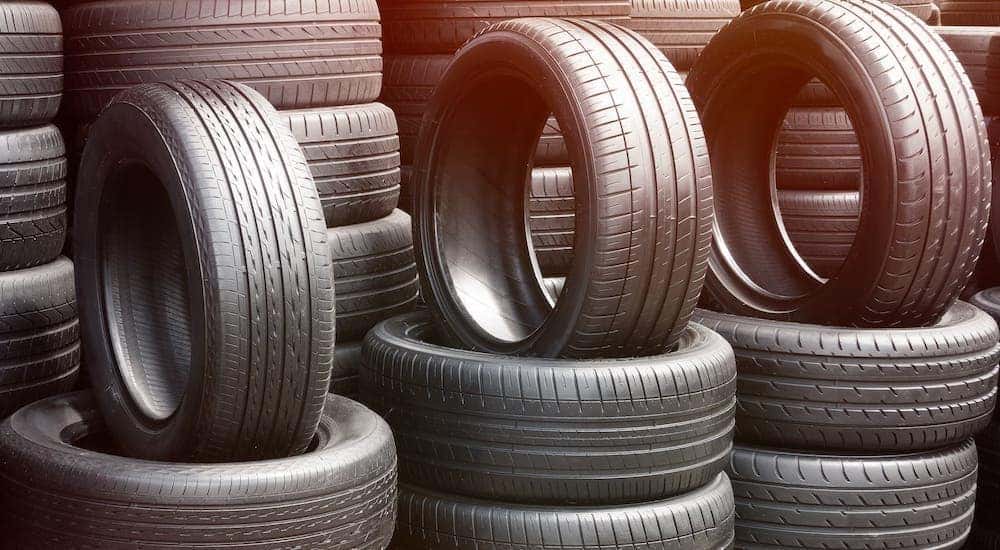Reputable Tire Shop Morris: Your Location for Top Quality Tires and Providers
Reputable Tire Shop Morris: Your Location for Top Quality Tires and Providers
Blog Article
Tire Service: The Effect of Weather
When it comes to ensuring optimum efficiency and safety on the roadway, understanding the influence of weather condition conditions on tire service is critical. In this discussion, we will discover the detailed connection in between climate conditions and tire service, dropping light on the importance of weather-specific tire maintenance methods and considerations.
Warm and Tire Performance
When subjected to heats, tires experience modifications in performance that can substantially impact automobile safety and handling. The heat produced from extended driving or heat conditions creates the tire rubber to soften, leading to reduced tread life and boosted wear. As the rubber becomes softer, the tire's grasp when driving reduces, affecting braking ranges and general traction. In severe situations, too much warmth can also create tire blowouts, positioning a severe safety and security threat to the car and its occupants.
Furthermore, heats can accelerate the procedure of tire aging, triggering the rubber to weaken quicker. This can cause cracks, bulges, and other types of damages that compromise the architectural stability of the tire. To mitigate the impacts of warmth on tire performance, vehicle drivers need to on a regular basis check their tire stress, rotate tires to guarantee even use, and examine for any type of indicators of damages. Furthermore, making use of tires particularly designed to stand up to high temperatures can assist preserve optimum performance and security when driving.
Cold Weather Condition Results
Cold weather condition conditions can have a substantial effect on tire performance and safety and security. As temperatures decrease, tire rubber can harden, causing decreased grip on icy or snow-covered roads. In winter, tires may likewise shed air pressure more rapidly, which can impact handling and gas efficiency. Additionally, chilly temperatures can cause tire sidewalls to stiffen, enhancing the risk of damages from pockets or various other road hazards.
To alleviate the results of cold weather on tires, it is essential to regularly examine tire stress and inflate them to the maker's recommended levels. Utilizing wintertime or all-season tires developed for chilly weather problems can also improve traction and grip on icy or snowy roadways - mopar tire service specials. Appropriate tire maintenance, including regular assessments for wear and damages, becomes a lot more vital during chillier months to ensure ideal performance and safety and security
Rainy Conditions Effect
Tires with worn-out treads are a lot more susceptible to hydroplaning, where a layer of water builds up in between the tire and the roadway surface area, leading to loss of traction. To battle this, vehicle drivers must consistently inspect their tires for ample walk depth and take into consideration investing in tires particularly designed for wet problems.

Snow and Tire Security
Snow-covered roadways position special difficulties for vehicle drivers, highlighting the relevance of proper tire choice and maintenance. When driving in snowy conditions, having the best tires can make a substantial difference in security and efficiency. Winter season tires are developed with special rubber compounds and walk patterns to supply better traction on snow and ice compared to all-season tires. The much deeper footsteps and sipes of wintertime tires assist grasp the road better, lowering the risk of slipping and gliding.
In enhancement to utilizing winter tires, it is vital to ensure they are effectively pumped up. Winter can cause tire stress to drop, influencing traction and handling (morris tire and this content alignment). Frequently examining and keeping the correct tire stress is important for optimum performance in snowy problems

Weather-Related Tire Upkeep
When confronted with numerous climate problems, proper tire maintenance ends up being a crucial element of vehicle safety and security and performance. Weather-related tire maintenance encompasses a variety of practices aimed at ensuring optimal tire feature and durability in various climate situations. One vital facet of weather-related tire maintenance is tire stress law. Rising and fall temperatures can trigger tire pressure to vary, affecting grip and gas efficiency. Consistently examining and changing tire stress according to producer suggestions is crucial for risk-free driving in altering weather. Furthermore, tire tread depth plays a substantial role in dealing with different weather aspects. Tires with ample step depth offer far better grasp on wet or icy roads, decreasing the threat of skidding or hydroplaning. When walk wear reaches a specific deepness is vital for preserving traction and stability in negative weather condition, checking tire tread regularly and changing tires. By focusing on weather-related tire upkeep, vehicle drivers can improve security, enhance car performance, and lengthen the life expectancy of their tires.
Conclusion
In final thought, weather condition conditions have a substantial influence on tire performance and safety and security (morris tire and alignment). From warmth influencing tire stress and put on to cold climate decreasing grip, it is essential to consider the weather when preserving and utilizing tires.
In this conversation, we will discover the detailed relationship between weather condition conditions and tire service, dropping light on the significance of weather-specific tire upkeep methods and considerations.

Report this page